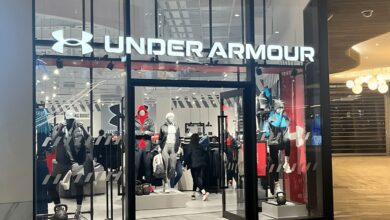The big retail health check: Why HFSS is in fact a golden opportunity
By Julian Miller, head of category planning industry at Symphony RetailAI

The UK government is clamping down on junk food advertising and promotion in a bid to tackle the obesity epidemic, which is affecting one in every 4 adults and one in every 5 children aged 10 to 11 according to the NHS. In a drastic move to combat this trend, it was announced that junk food ads will be banned from our screens before the 9pm watershed, beginning in 2023.
Meanwhile, game-changing regulations are coming into force next year that will restrict where and how foods that are high in fat, salt and sugar (HFSS) can be promoted in supermarkets. These laws will affect all major retailers and will apply to companies with 50 employees or more.
The government’s intention here is to influence consumers to make healthier choices while doing their shopping, but the changes will undoubtedly have huge ramifications for FMCG brands and retailers. Analysis shows that £3bn in value sales could be lost as a result.
Many retailers are therefore asking how they can anticipate the changes ahead of the October 2022 deadline. To avoid any serious impact, they must use the data they have to identify how best to act. The best retailers will be turning to analytics and predictive models to ensure they make the right decisions. There are three main areas they should focus on as part of this analysis.
Planning new promotions
In 2020, 26.4% of grocery sales were based on promotions, according to a survey of 50 UK retailers carried out by Incisiv and Symphony RetailAI. The HFSS regulations will spell the end of ‘buy one get one free’ promotions on products such as confectionery, chocolate and crisps, forcing retailers to re-evaluate their promotion planning.
These volume price promotions typically lead consumers to buy almost 20% more than they otherwise would, so retailers will need to decide which are the best alternative products for mass promotion to replace HFSS items.
By drawing on historic data, predictive models and even through the use of AI, retailers can review which products have responded well to promotions in the past, and also predict how they will respond in the future in a different promotional context. This should also include an assessment of not only which products proved particularly profitable when promoted but also whether any helped to bring in new shoppers, made them spend more or buy something else in the same category or elsewhere in the store.
Technology is the key to fully uncovering previously unknown category dynamics. Using the right technology, retailers can analyse the relationships between past performance and promotional activity and identify trends that translate into actions that drive sales, margin and customer loyalty. This will be key to filling the gap that will be left when HFSS foods can no longer be promoted.
Drawing on customer loyalty data
Loyalty card schemes provide a wealth of data that retailers can turn to when anticipating the changes that will likely need to be made following introduction of the HFSS regulations.
At a granular level, retailers can view individual transactions and follow a customer’s sales history to understand which items customers turn to if their normal purchases aren’t available or are not on promotion. Understanding that any individual store serves many different customers means that segmenting the customers into groups that display common behaviour is the key to making the right decisions at a store level.
It may be that customers only buy a certain item while it’s on promotion. Classic examples of this are multipacks of soft drinks or crisps, for which shoppers usually avoid paying full price.
Insights from loyalty schemes allow retailers to segment their customer base by basket size and spend – so they can see who is spending more on HFSS items and whether they are buying from a good breadth of categories.
This will help retailers to decide how to best target these shoppers in alternative ways, even after the legislation comes into force. They might, for example, choose to reduce the number of high salt crisps they stock and instead focus on alternatives that are purchased by the most important customer groups, with one of these options always on sale.
Managing store and floor planning
Finally, with promotions on aisle ends and at checkouts out of the equation post-HFSS regulations, non-promotional shelf space will become a key consideration for retailers. Category managers, for example, will need to think about reorganising their categories on the shop floor to make up for lost sales.
Once again, decisions about store and floor planning should be led by the data. Looking at the shelf, where have products been placed previously to maximise sales performance while shoppers are browsing? Which healthier alternatives will perform well when moved to the aisle-end or checkout and tempt customers into a purchase?
It’s no longer necessary to reorganise an entire store in order to assess the impact of different layouts.
Retailers are bracing for the full impact that the HFSS legislation will have when it comes into force. To put themselves in the best possible position before then, they should be utilising and maximising the data they already hold. This will give them a better handle on promotions, category decisions and store layout – and ultimately make the transition a smoother one next year.
Julian Miller is head of category planning industry at Symphony RetailAI









